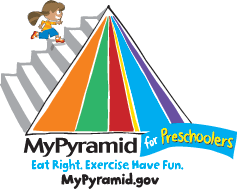By Heidi Green ©, reprinted with permission from BabyGooRoo.com
 Five years ago, I had very firm ideas about childhood nutrition. “Balanced meals” was my mantra. I presented plates with foods of different colors (indicating different nutrients), and I sought out whole foods, natural foods, and organic foods. My firstborn stuck up his nose at much of it. Even the foods children are “supposed” to love – macaroni and cheese, pizza, and hot dogs – earned his disdain.
Five years ago, I had very firm ideas about childhood nutrition. “Balanced meals” was my mantra. I presented plates with foods of different colors (indicating different nutrients), and I sought out whole foods, natural foods, and organic foods. My firstborn stuck up his nose at much of it. Even the foods children are “supposed” to love – macaroni and cheese, pizza, and hot dogs – earned his disdain.
I quickly went through what I now think of as the Five Stages of Preschooler Feeding Grief:
- Denial – “He’ll eat it next time.”
- Anger – “Why won’t he eat this?!”
- Bargaining – “Eat this if you want dessert.”
- Depression – “What’s the point in cooking good foods if he won’t eat them?”
- Acceptance – “Well, he is a healthy boy in spite of being picky.”
And that’s the important truth: my now five-year-old son is a healthy child. He’s lean and active, energetic, and funny. And while he still prefers the foods he accepted easily, he has broadened his palate some. A little bit.
MyPyramid for Preschoolers
The title of this U.S. federal government’s subpopulation-specific nutrition pyramid, MyPyramid for Preschoolers available at ChooseMyPlate.gov, is something of a misnomer. After all, preschoolers won’t use it themselves. Most don’t read. It’s a sure bet that none are planning their own meals! So this tool is, more accurately, for parents of preschoolers. Still, those who are planning meals for children between the ages of two and five may find it helpful.
Like the other MyPyramid modules, the preschoolers’ site is customizable. Parents can enter in their children’s information, and find out information related to:
- Growth charts – Body Mass Index and height-for-age charts are available. Unfortunately, although the site does acknowledge that there is a “wide range of normal growth,” it still encourages parents to “see where your child compares to other [children].” Truly, growth charts should compare a child to himself, over time. Also, the growth charts provided here are the typical NHANES (National Health and Nutrition Examination Survey) charts and not those developed by the World Health Organization as a result of a seven-year, international study of optimally-fed infants. No mention is made of those charts.
- Eating habits – Some pretty common-sense information will give parents a starting place. Suggestions include: set a good example, offer a variety of foods, start with small portions, help them know when they’ve had enough, follow a meal and snack schedule, make mealtime a family time, and more.
- Feeding picky eaters – If the toddlers I have known are any indication, I predict this will be the most-visited part of the site! Parents can look here for guidance about common types of picky eating, how to cope with it, and how to get preschoolers to try new foods.
- Physical activity – Again, the suggestions seem to be largely common sense. Do parents really need to be told that they should be role models in this area? Do they need to be told that engaging in family activities leads to more activity for their children? The section on how to keep your active preschooler safe sounds promising, but actually only links to the Centers for Disease Control and Prevention site with just six tips.
- Food safety rules – Clean, chill, separate, and cook are rules that apply to food preparation for any eaters, but tips about choking hazards and prevention may be helpful.
Of Note for Parents
Childhood obesity is a serious problem – and I can’t help but think that maybe the physical activity page should have been above the growth charts. Since physical activity is important for everyone, I’d rather have parents focus on what their children are doing than on these numbers!
Still, this site might be helpful as a discussion-starter for parents who are starting to grapple with the problem of picky eating in their preschoolers. If nothing else, it might help parents move from the Stages of Preschooler Feeding Grief to a more practical, problem-solving construct.
Even if it doesn’t, take heart. A friend told me of a child she once knew who seemed to survive on just doughnuts and pizza. Try as his parents might, they faced insurmountable opposition to other foods! What happened to the child? These days, he’s a strong, healthy pediatrician.
This brings us back to the final stage of Preschooler Feeding Grief: Acceptance. Parents, look at your children. Most times, they turn out healthy in spite of picky eating.